Gasser Anna
Montag, 28. Februar 2011
|
|
Mammals are the most popular class and they are vertebrates. They have a backbone, which is why they can move with great ease. They all have lungs and breathe in air. In addition, they are warm-blooded, which means that they are able to maintain a constant body temperature regardless of the outside temperature. Mammals are the only animals that possess true hair and they have the capacity to produce milk. Most of them walk on four legs.
The word mammal comes from the latin word "mamma", which means "breast". Normally mammals don't produce eggs, but there are two types that lay eggs: the "platypus" and the "echidna".
The current extinction rate is 130 species per day. The organisation WWF works against the extincion of species. There are between 3,500 and 5,000 species of mammals today.
|
Daniela Prader
Montag, 28. Februar 2011
|
|
Eight interesting facts about birds:
- The most yolks ever found in a single chicken's egg is nine.
- The now-extinct elephant bird of Madagascar laid an egg that weighed 27 pounds.
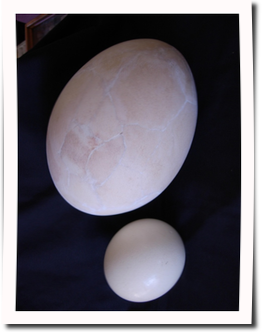
- A bird's heart beats 400 times per minute while resting and up to 1000 beats per minute while flying.
- The world's only wingless bird is the kiwi of New Zealand.
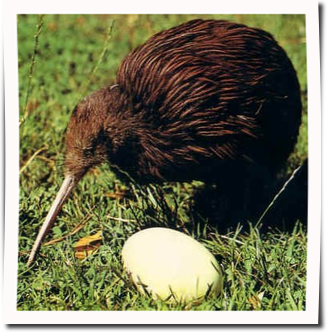
- The homing pigeon, Cher Ami, lost an eye and a leg while carrying a message in World War I. Cher Ami won the Distinguished Service Cross. Its leg was replaced with a wooden leg.
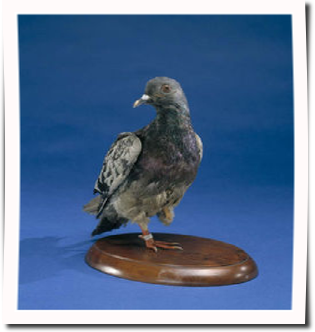
- The only known poisonous bird in the world is the hooded pitohui of Papua, New Guinea. The poison is found in its skin and feathers.
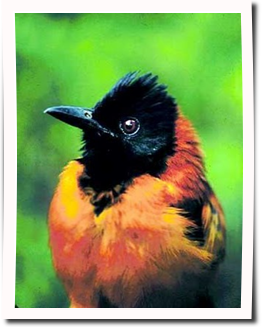
- Migrating ducks and geese often fly in V-shape formations. Each bird flies in the upwash of its neighbor's beating wings and this extra bit of supporting wind increases lift, thereby saving energy.
|

Jonas Müller
Montag, 28. Februar 2011
|
|
Worldwide about twenty-nine species of clownfish or anemonefish are recognized. Depending on species, clownfish are yellow, orange, reddish or blackish and many show white bars or patches. The largest can reach a length of 18 centimetres, while some barely can reach 10 centimetres.
Ecology and habitat
Clownfish are native to warm seas, e.g. the Indian and Pacific ocean, the Great Barrier Reef and the Red Sea.
Clownfish live at the bottom of the sea in reefs or in lagoons. There are no clownfish in the Caribbean.
Diet
The clownfish feeds on small invertebrates which otherwise potentially could harm the sea anemone. Clownfish are omnivores. The diet of the clownfish also consists of copepods, algae, isopods and zoo plankton.
Clownfish are omnivorous: in the wild they eat live food such as algae, plankton, mollusks, and crustacea; in captivity they can survive on live food, fish flakes, and fish pellets
Special Characteristics
Clownfish are the only species of fishes that can avoid the poison of a sea anemone.
Clownfish live in pairs inhabiting a single anemone. When the female dies, the dominant male changes sex and becomes the female. Because clownfish are all born as males. On the top of the hierarchy is the reproducing female followed by the mating male.
In a group of clownfish, there is a strict hierarchy of dominance. The largest and most aggressive female is found at the top. Only two clownfish, a male and a female, in a group reproduce through external fertilization.
Life of a clown fish
Clownfish lay eggs on any flat surface close to their host anemones. Depending on the species, clownfish can lay hundreds or thousands of eggs. Members of some clownfish species become aggressive in captivity; others can be kept successfully with other individuals of the same species.In captivity, the clownfish can live from 3 to 5 years. In the wild, they live 6 to 10 years.
sources : www.wikipedia.com
|

March Lukas
Montag, 28. Februar 2011
|
|
- a fish is an aquatic vertebrate animal
- it is covered with scales, equipped with two sets of paired fins and several unpaired fins
- most fish are "cold-blooded"(ectothermic) à their body temperatures vary as ambient temperatures change
- fish are abundant in most bodies of water
- they can be found in nearly all aquatic environments, from high mountain streams to the abyssal and even hadal depths of the deepest oceans
- fish exhibit greater species diversity than any other class of vertebrates (31,900 species)
source: www.wikipedia.com
|
Eichbichler Johann
Montag, 28. Februar 2011
|
|
What features do reptiles have for adaptation to life on land? (at least 4)
- leathery or scaly skin limits water loss
- tough and leathery eggs
- regulation of temperature enables them to be active for long periods to make eggs develop very successfully
- regulation of temperature enables them to be active for long periods to hunt
- lungs
Mammals are endothermic. What does the possibility of temperature regulation enable animals to do?(at least 3)
- They can live invery different habitats
- allows them to remain alert and active
- the young are cared for by the parents
- they can hunt during the night
|
Eichbichler Johann
Donnerstag, 17. Februar 2011
|
|
|
Merler Sarah
Donnerstag, 6. Mai 2010
|
|
Viral vectors
Viral vectors are used to deliver genetic material into cells. This process is performed inside a living organism or in cell culture. Viruses have a specials mechanism to transport their genomes inside the cells they infect.The infected cells are described as transduced.
Microinjection: Genes by injection
An ultra fine cannula is used to inject genes into an animal cell. But so far it only works with animal cells and scientists have to do lots of research to find suitable genes, vectors and cell that are adapted to plant conditions.
|
Reyer Beatrix
Donnerstag, 6. Mai 2010
|
|
Defintion: A gene gun is a device which is used to inject DNA into the cells by the help of particles (that´s why it´s also called biologistic particle delivery system).
Application: Today it´s an entrenched method to create transgenic organisms. In the majority of cases for plants.
|
Moritz Prinoth
Donnerstag, 6. Mai 2010
|
|
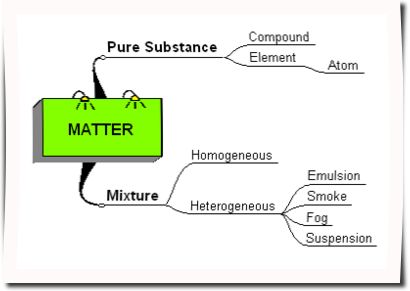
|

Alexander Klement
Donnerstag, 6. Mai 2010
|
|

|

























Kategorie:
vertebrates